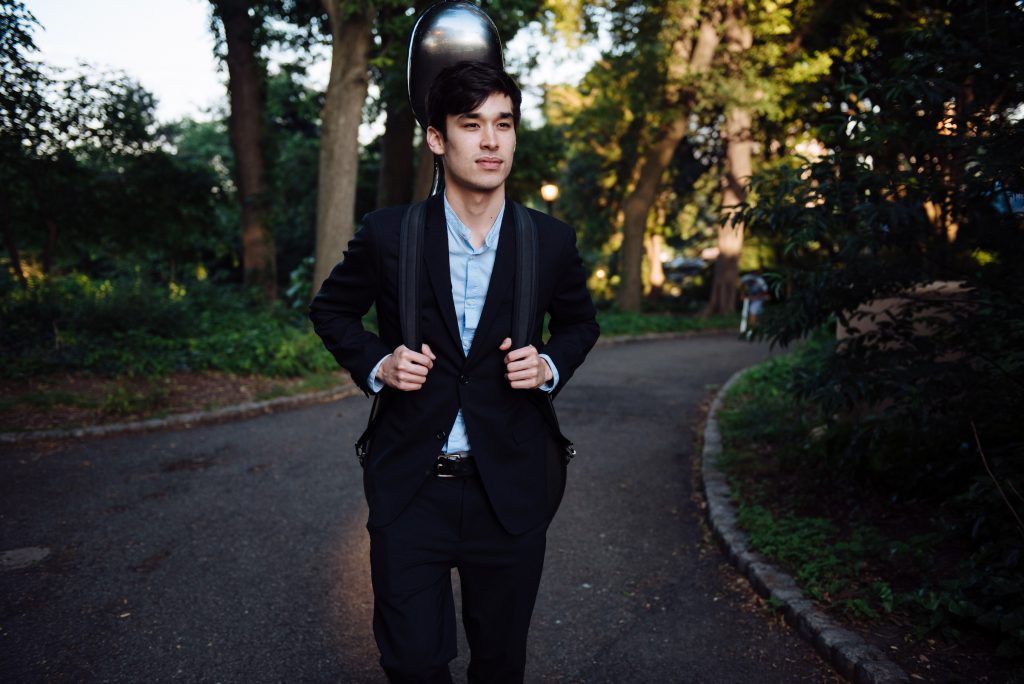
String Visions: Richard, it’s great to see you. Congratulations on your upcoming album of Bach’s Six Cello Suites. That is a wonderful achievement. Remind me, how old were you when you recorded the suites?
Richard Narroway: Twenty-four.
String Visions: Twenty-four, that’s right. I think many would agree it’s quite amazing that you made a recording of the Bach Suites at such a young age. Most people wait till they’re older, because they never feel that they can quite do it the right way.
Richard Narroway: Honestly, I felt that it was probably as good a time as ever. I had been playing them and studying them fanatically for years, and I wanted to cement my interpretation while my ideas were still fresh in my mind. Besides, there’s never going to be a “right” way to play this music, so why wait?
That being said, when you look at all the great artists—Peter Wispelwey, Anner Bylsma, Yo Yo Ma, Janos Starker and so on—they all recorded the Bach suites several times – two, three, four times. It’s amazing to hear how much their ideas change over time. Even Glenn Gould’s interpretation of the Goldberg Variations is drastically different between his earlier and later recordings. Just because I record it now doesn’t mean it’s set in stone forever. I mean, I guess in a way it is, but I very much hope to record it again in 10 or 15 years time. It will be really interesting to see how my interpretation changes in that period.
I think the wonderful thing about this music is that it’s always changing. The legendary Pablo Casals said that, for him, Bach’s music is never the same, but rather something new to be experienced each day. That’s definitely the case for me too. It never feels the same from one day to the next. Our interpretations are always going to change as we change and grow as people.
String Visions: Yes, I know what you mean—music is always changing. It also changes depending on who you play for and how the audience reacts. When you’re in a big space, for instance, I feel that the audience often influences the interpretation. Do you agree with that or have you experienced that when you played the Bach suites?
Richard Narroway: Absolutely. I’ve been fortunate enough to play this music in many unusual spaces and for all kinds of different people. I’ve played it in churches, hospitals, I’ve played for Parkinson’s sufferers, students, general music lovers, all kinds of different communities. All of these people of course interact and respond to the music in different ways, and as a performer I try to be flexible and sensitive enough to respond to the atmosphere of the room and to the feedback I am receiving. For example I am not going to play the same way in a quiet hospital room as I do in a large concert hall.
But there was one common trend I found with most of my audiences, and that was a sense of peace and meditation. Many people find these suites to be very soothing and therapeutic. It was amazing to see how an entire hospital ward can be transformed into a place of calm and beauty at the sound of Bach. Or how Parkinson’s sufferers are able to find a sense of peace in their motions when they move to this music. Of course some audiences, particularly younger kids, may not be responsive at all. They can get fidgety or bored if I don’t keep their attention. That is a whole other challenge. But in any case I find that I am always responding to the audience that’s in front of me. That’s the whole point, I think—to share. And the more interactive it can be, the more meaningful. That’s the beauty of making music.
String Visions: Yes I agree. I think it is also interesting how we tend to play differently for a live audience than we do for a studio recording. You were touring Australia for 30 days before you recorded this album. How did that impact the recording process?
Richard Narroway: That was a tough thing, actually. I was performing this music day and night for 30 days and because of that I started to feel really comfortable on stage. But on the other hand I wasn’t getting much practice time at all. On top of all the traveling and workshops and masterclasses, there was just no time. Whenever I was lucky enough to find a small window of time to practice, the whole process felt kind of foreign to me, almost like I was out of shape! And that made me realize that performing and practicing, as activities, don’t always engage the same mind space. It was a strange phenomenon, because I would go on stage and everything would feel fine, like the music was ingrained in my muscle memory, but then I’d go and practice and it was clear that I hadn’t worked on certain things in a while. I think we really have to practice practicing, too!
When I started recording the suites, I had to try to tap into this mindset as if I was playing for people and sharing music with people, because I think you definitely play differently when you’re in front of an audience as opposed to just a microphone.
String Visions: That’s right.
Richard Narroway: The microphone is so objective and impersonal. It can be kind of…it can make you a little uptight, actually. It certainly did for me during the first few days recording, until I was able to tap into that frame of mind that made it seem more like I was sharing the music with an actual audience.
String Visions: So did you record the suites consecutively from 1-6 or did you jump around?
Richard Narroway: No, I jumped around. I started with Suite 2 just because on that particular day I felt like it would be the most comfortable one, and it would allow me to feel the space and resonance of the room. And then I jumped around, one suite per day. I might have done 2, 3, 6…actually I have no idea what order I did it in. But some of the suites were definitely easier to record than others. For a few of them I just played through the entire suite twice and that was all that we needed. I think that’s pretty much what we did with 1, 2 and perhaps 3. Before doing any smaller patch work in individual movements I tried to play each suite from start to finish without stopping, as a kind of “base take,” which would also allow for a sense of continuity between movements. I don’t like it when each movement feels so separated. Of course it wasn’t so simple with all the suites. Some of them required many takes of small segments. Suites 4 and 6 were definitely the more challenging ones to record. I remember Suite 6 in particular being really difficult on the day of recording. I hadn’t had time to practice that one in a while. I’d been performing it a lot, but I hadn’t done some serious woodshedding for several weeks. So when it came time to record, it was an exhausting experience as I had to keep doing takes over such silly errors. Even now when I listen back to it, I’m not entirely satisfied with small things here and there, but I mean, what can you do? That’s the nature of recording—it documents how we play at a specific time on a specific day, no matter what the circumstances.
If I could do it again, I would actually try to allocate eight days to record the full album, so one suite per day and then two buffer days where I can go back and do bits and pieces again, which I didn’t make time for with this particular recording. This time I had to do it all in six days, one suite per day, and that was really exhausting just trying to keep focused and maintain enough stamina throughout the day. When you’re sitting in front of a microphone for several hours at a time, it is easy to get sloppy. That’s just how it goes.
String Visions: Yes, it’s hard.
Richard Narroway: You don’t have the adrenaline you get in performance situations to keep you energized.
String Visions: That’s right. It can be very difficult. Did your relationship with the music evolve over the course of the 30-day tour?
Richard Narroway: Absolutely, particularly my relationship with the dance and rhythmic elements in the suites. Before this tour I had never played in a situation where people actually had to dance to the music, but during this tour I got to collaborate with several Dance for Parkinson’s workshops. In these sessions I had to play in a way that provided enough of a sense of rhythm and pulse for these people to dance to, which really changed my whole approach to some of the movements. I remember the bourrées from the third and fourth suites worked really well in those sessions, as did some of the gigues. When I got on stage again, I started really trying to incorporate this feeling of dance. It made the music so much more alive, so much more joyful, and even more engaging to perform and to listen to, I think.
Throughout the tour I also tried to find new ways to create variety in repeats. There’s nothing worse than taking a repeat and playing everything exactly the same way. So I tried to find ways to change things—add ornaments, create inflections, bring out different voices and things like that. As an audience member, listening to three hours of the same kind of music can in itself be an exhausting experience, so we must do what we can to make the music feel spontaneous and alive.
String Visions: So when you were preparing for the tour I remember you talked about the Aboriginal “Walkabout,” and how it inspired you to go on a walkabout of your own. What is a walkabout in the aboriginal culture?
Richard Narroway: The walkabout is traditionally a rite of passage for young indigenous Australians. They venture into the wilderness for months at a time, tracing the paths of their ancestors and forming a closer relationship with their surrounding landscapes. It’s basically an important spiritual journey of maturation going into adulthood.
String Visions: So that happens at what age?
Richard Narroway: It’s in your teen years when you go into adulthood.
String Visions: How long do they stay out in the wilderness?
Richard Narroway: Up to six months, I heard.
String Visions: Each person alone?
Richard Narroway: Yeah, that’s the point, they have to go alone. The whole philosophy behind it is that they don’t see Australia in terms of its geography. They don’t think of maps and distances and things like that. They feel spiritually connected to the land and so this journey is to help them discover these connections and learn about themselves in the process. It’s like a spiritual journey of self-discovery.
String Visions: But it’s not only spiritual, it’s also practical because if they’re out there by themselves they have to survive.
Richard Narroway: Yes, I guess it’s kind of like the ultimate survival challenge. They’re learning how to survive and be adults. But for Indigenous Australians it is much more than that. It’s even more so about the inner journey for them, I think.
String Visions: Fascinating. So you came up with the word, “Bachabout” in the lead up to your tour. In what way did you relate those two terms?
Richard Narroway: Well, I was very drawn to this whole idea of a spiritual journey, so I came up with the word “Bachabout” as a way to describe my own journey around Australia. My goal was to perform the suites all around the country, engaging with many different communities along the way, in an effort to form a closer relationship with the music. It was kind of a cool concept going into it and I’ve hung on to that idea ever since.
String Visions: I think it’s a great concept. In a way, the Bachabout is also for you a spiritual journey into Bach’s music.
Richard Narroway: Absolutely.
String Visions: And it also has to do with growing as a person and evolving with the music, so I can see the connections between the two.
Richard Narroway: Right exactly.
String Visions: Can you talk a little about your approach to the Bach Suites?
Richard Narroway: Well, that’s an interesting question because of course, even now when I listen to how I played it two years ago, I wouldn’t necessarily make some of the same decisions that I did back then. But, I mean, that’s just the nature of recording. And as I mentioned before, that’s the beauty of this music—it never quite feels the same from one day to the next.
But in terms of general approach, when I recorded it I used a modern cello and modern bow, which is of course quite distant from Bach’s own sound world, but I did my best to try to balance this setup with a thorough understanding of Baroque style. So in the lead-up to the tour, I was immersing myself in treatises and books and performance manuals from Bach’s time and I was trying to figure out how I could apply those concepts within a modern setup. I don’t think it’s a black or white thing. It’s not as simple as choosing to perform with total commitment to historical performance practice, with gut strings, low tuning and so on, or just forgetting all about it. I think there’s plenty of room to be able to combine an understanding of historical principles with current trends in modern performance practice.
So that’s the kind of thing I’m trying to do. I have thought a lot about sound production, phrasing, vibrato usage, slurring nuances, ornaments, tempo, characters of the different dances, and things like that. I think in the end the most important thing is that the spirit of the music comes to life, which is more often a matter of phrasing, character and attention to harmony, than of specific issues of Baroque tuning and style.
String Visions: Yes, I completely agree. What about your personal connection to the Bach Suites. How do you identify with this music?
Richard Narroway: From a young age I’ve always felt a special affinity to Bach’s style of writing. I think it’s something to do with the spiritual quality of his music, which I relate to, as well as the intellectuality of his music. There’s a great balance between the two. I’ve always loved his mastery of counterpoint and the harmonic richness that is central to his writing.
When I was young I played The Well-Tempered Clavier, so maybe it’s in my blood somehow. I don’t know…I think for some reason, more than any other composer, I’ve always found that when I perform Bach it’s just so immensely gratifying. Maybe it’s something to do with the fact that it’s so soothing on the spirit. The thing is, when I’m playing a Brahms sonata or Rachmaninoff or something like that, I’m very deliberately trying to tell a story to the audience, but when I’m playing Bach it’s much more just about objective truths. It’s about love, it’s about death, it’s about tragedy, joy, and so on. So I guess in a way it is very cleansing to play, very meditative. If you can tap into that—sometimes it doesn’t go so well though—but if you can tap into that frame of experience, it’s really spiritually gratifying, and that’s perhaps why I relate to it so deeply.
String Visions: Yes I agree. When Goethe, the famous poet from Germany, heard The Well-Tempered Clavier for the first time, he said, and I might be paraphrasing, but he said something like, “In the consciousness of God before he created the universe was the harmony of Bach.” When he heard this music he just felt it had an incredible connection with the universe somehow. Now, I have always felt that too, and that’s what you’re talking about—this spirituality that has nothing to do with a specific religion. It’s like an incredible connection to something that’s much bigger than we are and that lifts us out of ourselves. I can totally relate to that.
Richard Narroway: Yeah, it’s a higher plane of existence for sure. The author Alain de Botton said something along those lines about how Bach’s music seems to be about devotion to a perfect ideal, something higher, beyond us. For him, Bach’s music shows what a belief in God must feel like, even if one doesn’t believe in God.
String Visions: Yeah, a higher plane of existence. It transports you into that realm, then you come back to yourself afterwards and then everything seems different and perhaps easier to comprehend. It has a spiritual cleansing effect, somehow.
Richard Narroway: Exactly.
String Visions: Can you give us a brief overview of how you prepared for the tour and the recordings?
Richard Narroway: So two years before the tour I did a complete recital of the six suites at Northwestern. That was kind of the first step of the journey, I think.
String Visions: When was that?
Richard Narroway: That was my senior year at Northwestern, in 2013.
String Visions: Oh that’s right.
Richard Narroway: Then while I was at Juilliard doing my master’s, Bach was kind of on the back-burner because I was focusing on other things. But whenever I did have time I would go back and refine my interpretative ideas. I took a class on Bach’s solo string works, which was really informative, and influenced my approach a great deal. I think the biggest thing it changed was my understanding of the notion of rhetoric. I started thinking a lot about articulation and how to enunciate subject lines and bring out certain voices with the bow. This also helped me organize my bow usage so that I wasn’t always using a ton of bow speed, but staying closer to the frog for much of the detailed work. That was kind of an important part in the process. I also listened a lot to different artists like Andras Schiff, Murray Perahia, and Isabelle Faust, to name a few, and learnt a lot from their own ideas of voicing and phrasing and so on. Listening to these different artists also made me realize that there are so many varied approaches out there, and yet this music still somehow comes to life. It reveals new things with each approach. I think that is a true testament to the genius of the music—that it can still reveal its secrets through so many different interpretations.
Towards the final stages in the lead-up to the tour, I had a couple months where I just focused exclusively on Bach. I practiced the suites a great deal and studied the harmonies and bass lines at the piano. It’s amazing how much practice time you can save when you spend some time at the piano—it really helps to form a clear conception of the harmonic journey of the piece. Mental practice was also hugely important, particularly while I was on tour with such limited practice time. Memorization wasn’t too much of a hassle since I had played them a great deal in the past.
About a month prior to the tour I did a concert at the Kalamazoo Bach Festival where I performed Suites 1, 4 and 6. That was pretty much my only chance to air out the music before I went, and then most of my performing experience with the suites was during the actual tour itself. And since I was playing them pretty much every day for 30 days, I grew closer to the music than I had ever before. It was really a life-changing experience.
String Visions: Fascinating. It’s truly exciting that you have this product out now. When is the album officially released?
Richard Narroway: September 22. You can pre-order it now on Amazon!
Audio Samples on Soundcloud:




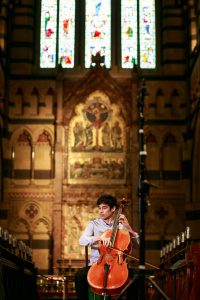

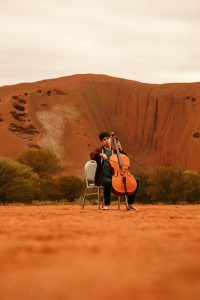
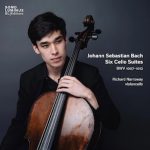
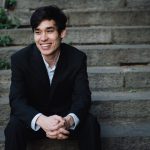
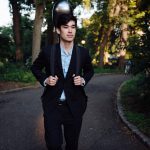


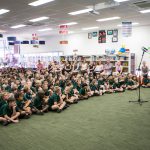
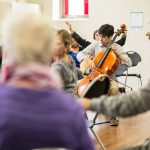

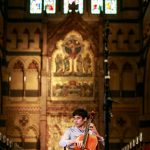
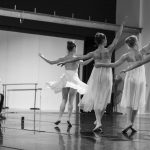
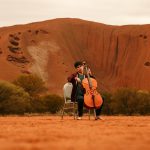
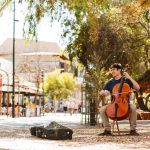










Your article changed the way I approach this topic in my personal life.